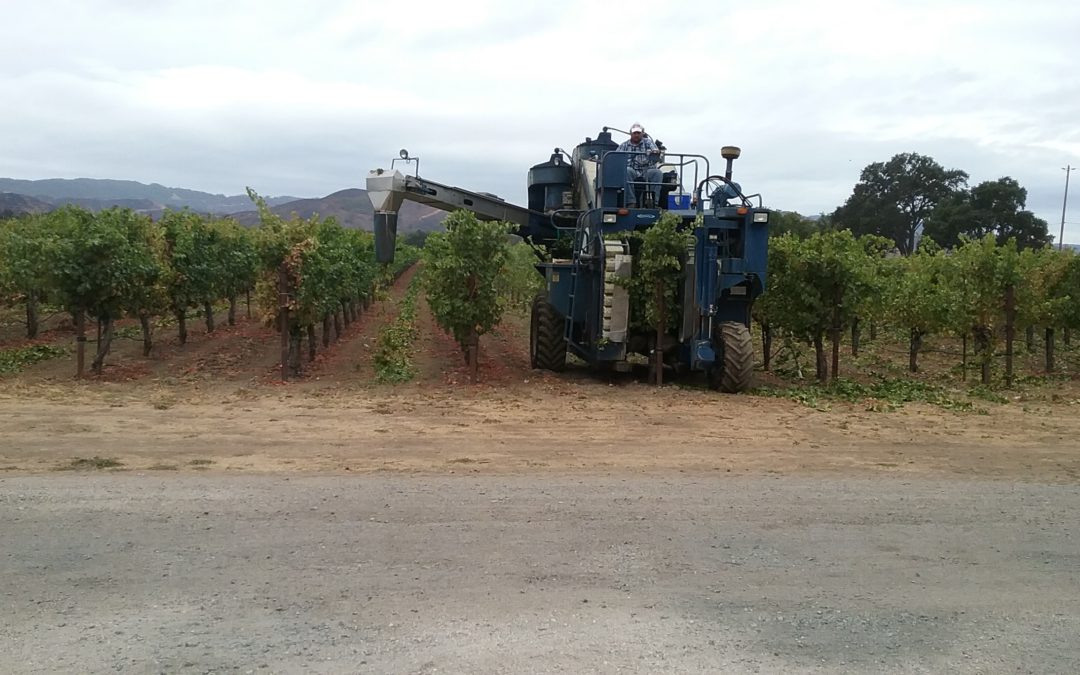DECEMBER 10, 2018. BY LAKE COUNTY GROWERS.
For those of you reading our viticulture blog from other countries (according to Google analytics there are several of you out there!) who may not be aware, California faced another year of terrible wildfires in wine country. Actually, we experienced one of the largest wildfires in the history of California – the Ranch Fire. You can read more about the 2018 wine country fires HERE and about California’s most recent devastating wildfires HERE. Thankfully, vineyards often act to block the spread of fires. Karma doesn’t quite apply for this act of kindness, however, as the grape berries may be negatively affected by something called “smoke taint.” The intricacies of smoke taint are widely under-researched despite great efforts by scientists around the world.
According to our friends at The Australian Wine Research Institute, “The risk of smoke exposure causing a perceptible taint in wine is a function of the stage of grapevine growth and development, the grapevine variety exposed, smoke concentration, duration of exposure and the volatile phenol concentration and composition of the actual smoke.” The stage of grapevine growth with the highest potential for grapes to uptake smoke compounds is from post-veraison leading up to harvest. (SOURCE: The Australian Wine Research Institute Fact Sheet: Smoke taint)
Luckily there are diagnostic tests which can warn winemakers of when the “smoke taint” wine fault flavor compound precursor exists within berries from a certain vineyard block. As with grapevine virus testing, we are realizing a great need for laboratory accreditation for smoke taint testing (link to WBM article).
Regional winegrape associations around California are doing a better job these days of communicating and working together. There are many challenges which we simply shouldn’t face on our own, such as Pierce’s Disease, viruses, and mechanization, because together we can more quickly and easily discover solutions. It was in this team spirit that a Lake County grower shared some lessons learned from their experiences with the wildfires this season:
“Earlier this season we saw at least 1500 tons of Sauvignon Blanc rejected, some without testing to verify a smoke taint problem. This blanket rejection of our signature grape variety has put a strain on grower-winery relations to say the least.

A sight no winegrape grower ever wants to see. Sauvignon blanc harvested to the ground instead of the winery.
Sadly, smoke taint became more of a factor as harvest progressed into the red varieties. We watched some vineyard blocks get harvested and fermented without any issues while neighboring blocks were rejected with smoke taint testing documentation. Most of these rejections had to do with the grape variety – such as Syrah and Petite Verdot, which are very susceptible to smoke taint.
A main concern, however, are the vineyard blocks which were rejected without smoke taint testing; or without wineries sharing the testing reports with growers. It just doesn’t make any sense! As harvest progressed, it became evident that there is no industry “standard” for dealing with smoke taint issues. Each major winery buyer was using a different protocol as to how to proceed. As noted earlier, I fear some grower-winery relationships may be damaged – some, beyond repair.
I think the lessons learned so far from all of this are:
1. Contracts. Have a very well-defined contract between grower and winery. Specifically- in terms of “product custody” of the product through harvest, delivery to the winery, and winery processing. The days of contracts which state “grapes shall be delivered in a merchantable condition” are long gone. (I hope the grape brokerage houses are paying attention to all of this.)
2. Crop Insurance. Before you ever need to file a claim, know what your policy covers and how payments are structured. Also, make sure that you know who provides documentation to substantiate a loss and how it is to be provided.
3. Industry Relations. It is hoped that as we look back at the 2018 harvest- both growers and wineries alike will assess their operations and working relationships to provide meaningful improvements.
Thanks to the Lake County grower who thoughtfully shared a rather painful experience so that we can all better prepare ourselves for these natural disasters in the future. Hopefully our industry will keep supporting smoke taint research and pushing for standardized, accredited methods of smoke taint verification moving forward!
Our thoughts are with all of those affected by the terrible devastation caused by the California wildfires over the past two years. Follow this link to donate to Red Cross wildfire relief efforts: https://www.redcross.org/about-us/our-work/disaster-relief/wildfire-relief/2018-california-wildfires-relief-information.html.
Have something interesting to say? Consider writing a guest blog article!
To subscribe to the Coffee Shop Blog, send an email to stephanie@lodiwine.com with the subject “blog subscribe.”
To join the Lodi Growers email list, send an email to stephanie@lodiwine.com with the subject “grower email subscribe.”
To receive Lodi Grower news and event promotions by mail, send your contact information to stephanie@lodiwine.com or call 209.367.4727.
For more information on the wines of Lodi, visit the Lodi Winegrape Commission’s consumer website, lodiwine.com.


